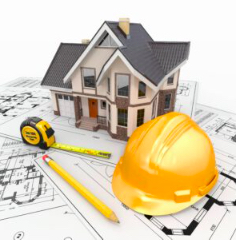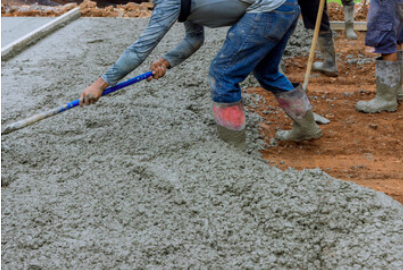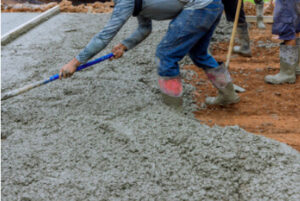 New Home Construction Nashville allows for a wide range of customization. From cutting-edge energy efficiency to popular design trends, you can build a custom home that meets your needs.
New Home Construction Nashville allows for a wide range of customization. From cutting-edge energy efficiency to popular design trends, you can build a custom home that meets your needs.
During the building process, a lender will typically make several inspections to ensure that the house is being constructed correctly. While traditional mortgages require that you pay both principal and interest immediately, construction loans typically have only interest payments until the completion of the project.
In many communities, before anyone builds a house or any other building, they must file a plan with their local building department. Once approved, they then go through the permitting process, and inspectors check during key points of construction to make sure that the builder is following the plans. Building codes and standards are an essential part of this process, and a strong code system can save lives, protect property, and keep homeowners safe.
Nationally, model codes are developed by several reputable organizations and industry experts. They undergo extensive research, analysis, and consultation to create a comprehensive framework for construction practices and safety regulations. When state or local jurisdictions adopt and enforce these models, they become the building laws in that area.
Modern code provisions ensure that homes and buildings are built to withstand the forces of nature, like hurricane winds, and provide the best possible protection and comfort for occupants. They also help lower energy costs for families and provide a range of environmental benefits.
The problem is that too often, when builders talk about “building to code,” it doesn’t mean that they’re going above and beyond legal requirements. It simply means that they’re meeting the minimum standards of the law. And that’s a dangerously low bar.
In addition to making homes safer and more energy efficient, current building codes can be a powerful tool for economic development and community prosperity. By lowering energy bills, they help to keep dollars in the hands of homeowners rather than power companies, which stimulates local economies and reduces reliance on coal-powered energy plants.
Sadly, the current building codes aren’t being widely used or enforced. The Biden administration is trying to change this by launching the National Initiative to Advance Building Codes, which aims to get states and towns to use modern building codes that lower energy costs and make homes more resilient against extreme weather events. The initiative offers financial incentives to encourage communities to adopt modern codes, and is focusing on new construction, not existing homes. But even if these programs succeed, it will take a long time before young people and homeowners understand the importance of building to code, and until builders have an incentive to meet high standards of quality and safety.
Materials
The materials used in construction can have a significant impact on the strength and durability of a house. They can also affect the aesthetics and comfort of a home. There are many different types of building materials available, including steel, cement, wood, glass, sand and clay. Each type of material has its own advantages and disadvantages. When choosing a building material, it is important to consider your budget, the climate where you live, and your personal specifications.
Stone and brick are classic building materials that can add beauty and value to a home. They are strong, durable, and versatile. They are also fire-resistant and rot-proof. However, they are expensive and require a lot of labor.
Metal is another popular building material. It can be used for a wide range of applications, from structural beams to electrical wiring. It is also a good choice for roofing because it can resist high winds and snow loads. However, it is important to remember that metal is prone to corrosion and can be damaged by salts.
Concrete is a great choice for foundations and structural walls. It is also a popular choice for outdoor areas, such as driveways and patios. In addition, concrete can be used for floors and accent walls. It is also environmentally friendly and easy to install.
If you are planning to build your own house, you will need several essential materials. The most important ones are cement, rebars, sand, and bricks. All of these materials are crucial for the construction of your home. You can also choose to use recycled and reusable materials to reduce your carbon footprint.
There are a number of different materials that can be used to build a house, from traditional lumber to sustainable materials. Some of these materials are more expensive than others, but they may be worth the extra expense if you want to reduce your environmental impact. You should discuss the materials that you are considering with your contractor. They can provide you with information about the advantages and disadvantages of each material. They can also help you select the right materials for your project.
Design
Home construction is the process of constructing single or multi-family residential structures. It can be undertaken by private homeowners and families, or investors who build homes for sale. This process can be complicated and time-consuming, and requires the help of building professionals. Building professionals may include builders, excavators, surveyors, and home designers or architects. Homeowners often hire a general contractor to oversee the design and construction of their new home.
Whether you’re building a new house from scratch or buying an existing home, the design process is one of the most important steps in the construction process. During this phase, you can transform your dream home into detailed plans that will guide the construction process. You can also select materials and finishes, ensuring that your vision is accurately translated into the finished product.
To create a successful home design, it is essential to find the right balance between creativity and practicality. Your home should be a beautiful space, but it must also reflect your lifestyle and the needs of your family members. If you’re unsure of what your preferred style is, you can use websites like Pinterest to explore different design options and get a feel for what you like.
After you’ve finalized the home design, it’s time to start assembling your team of building professionals. It’s a good idea to choose the builder first and then work with them to develop your home design. It’s important to communicate with all members of your team and to make sure that everyone understands what you want. This will ensure that the finished product matches your vision and preferences.
During the design process, you’ll want to carefully consider your budget and your time constraints. It’s a good idea to consult with professional designers to get an accurate estimate of the costs and timelines. Additionally, you should take into account any potential unforeseen costs, such as weather delays or labor shortages. Lastly, you’ll need to make sure that the design and materials you select are available on site when construction begins. Otherwise, you might have to delay the project until the necessary materials are available.
Construction
Home construction is an exciting process that transforms a vision into a tangible reality. It involves a lot of hard work and requires expertise from architects, contractors, and engineers. It’s also a costly project, so you need to be prepared. Having an in-depth understanding of the process will help you avoid any mistakes and save money.
The first step in the process is to prepare the land where your new house will be built. This is important because it ensures that the site is safe and ready for construction. The land must be cleared of debris, and utility access must be set up. It’s also a good idea to have a professional surveyor stake out the property, based on original plot drawings. Once the site is ready, a concrete foundation can be poured.
Once the foundation is in place, a framing crew can begin work on the house. They will erect lumber for walls, floors, and ceilings, as well as roof trusses. This stage can take a few weeks to complete. Once the framing is done, the sheathing can be applied. Sheathing is large sheets of wood, oriented strand board, wafer board, or exterior gypsum that are nailed to the frame.
After the sheathing is applied, plumbing pipes and wiring can be run through the walls. Then, the mechanical and electrical contractors can connect all the necessary elements. Rough-in is when the homeowner can walk through each room and discuss framing and rough-in questions and changes with the builder.
This is a crucial phase in the construction of a new home, as it allows you to make sure that everything is as you planned. It’s also a good time to discuss your budget with the general contractor, as you may need to increase the money set aside for materials. It’s best to do this early so that you don’t end up with a surprise bill.
Before a family can move into their new home, the building must be inspected by a local inspector. Once the building meets local safety and building codes, a certificate of occupancy is issued. This is a necessary step to ensure that your family can safely and comfortably move into their new home.

 If you plan to build a new home, you’re probably wondering how to start. You can do many things with concrete – from building foundations and retaining walls to Concrete Driveway and grout. You may wonder how much you can expect to spend on these services, but you will surely be pleased with the results. Here are some of the most common uses for concrete. Hopefully, these tips will get you started on the right path.
If you plan to build a new home, you’re probably wondering how to start. You can do many things with concrete – from building foundations and retaining walls to Concrete Driveway and grout. You may wonder how much you can expect to spend on these services, but you will surely be pleased with the results. Here are some of the most common uses for concrete. Hopefully, these tips will get you started on the right path.